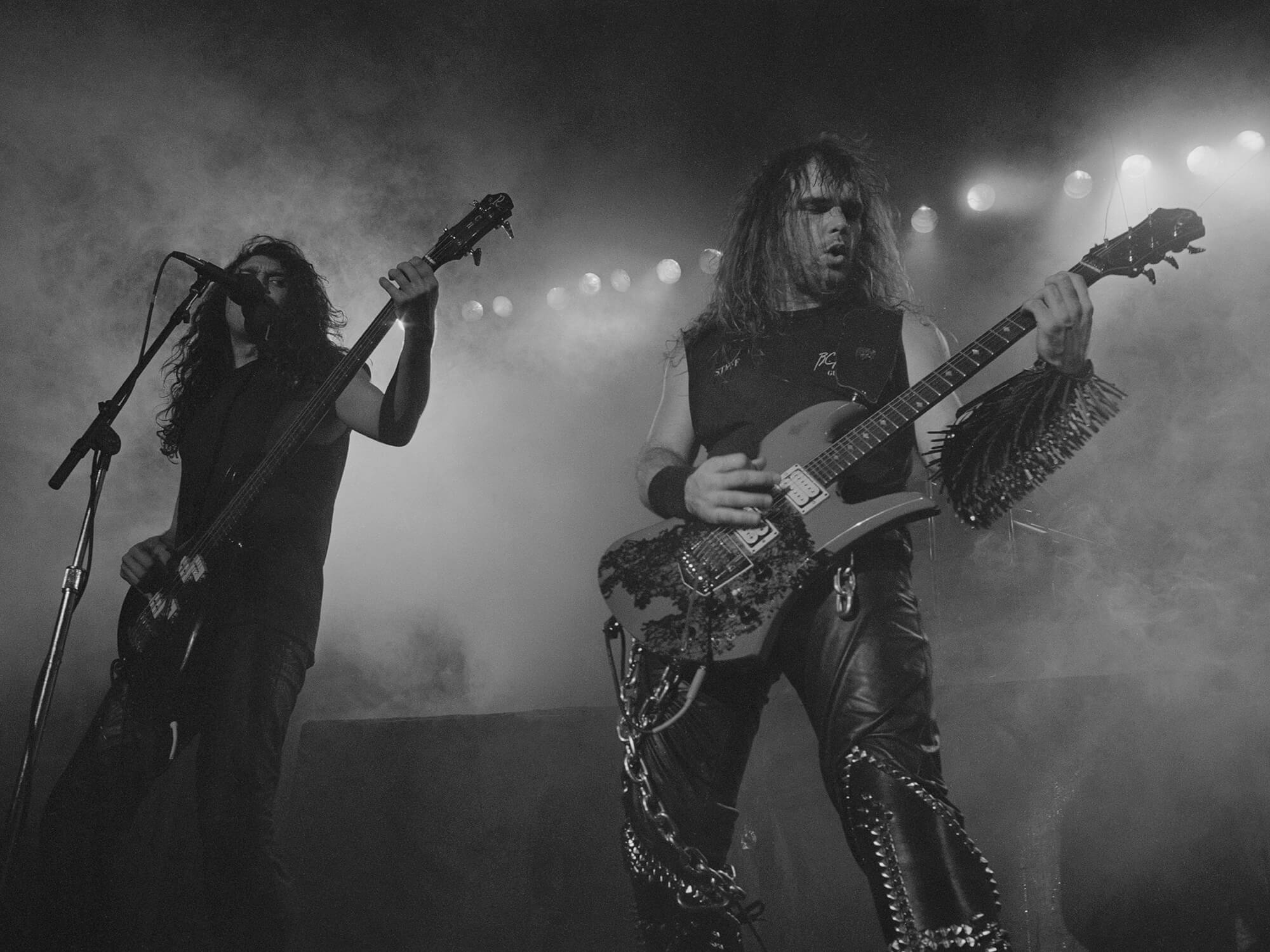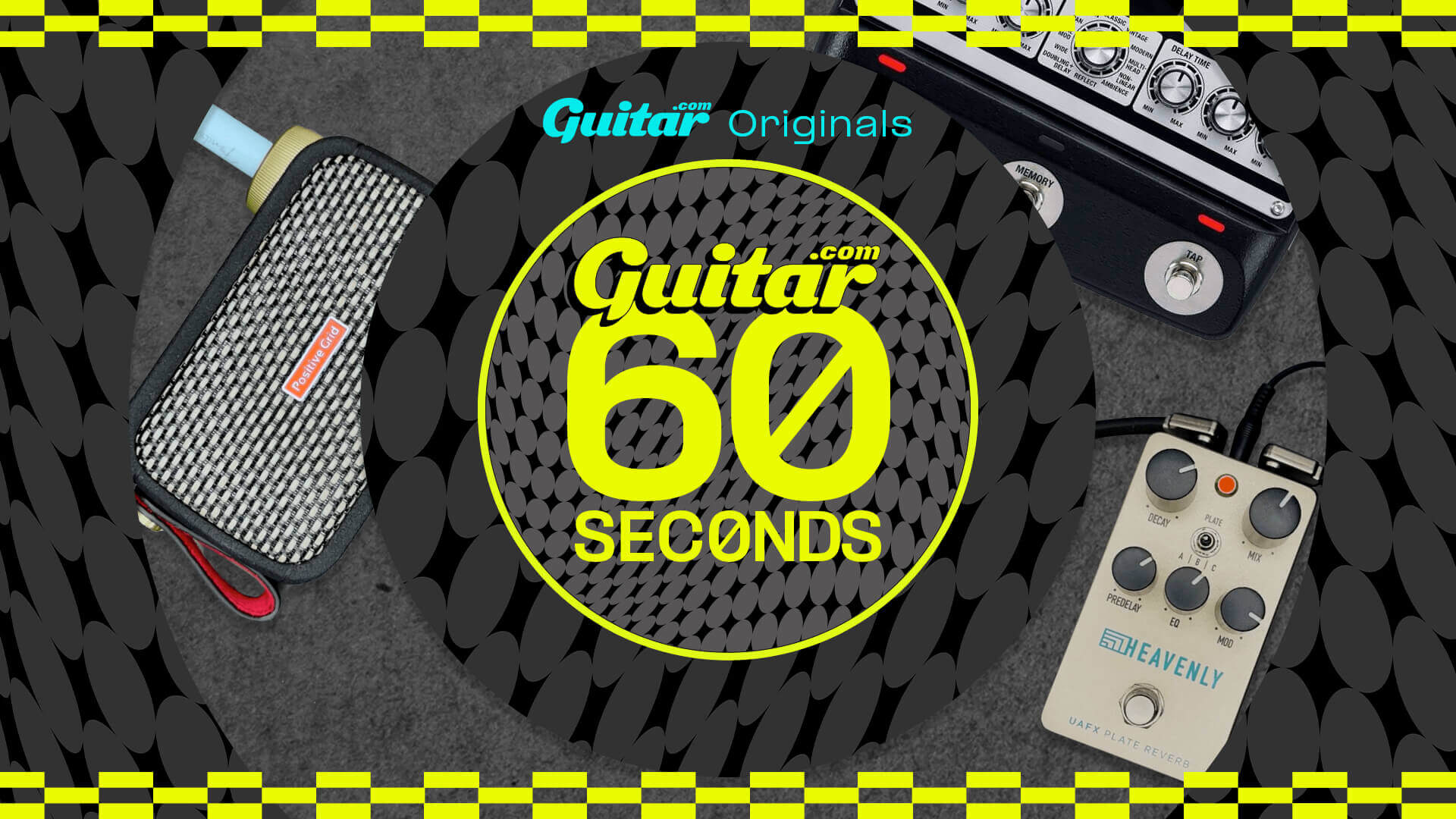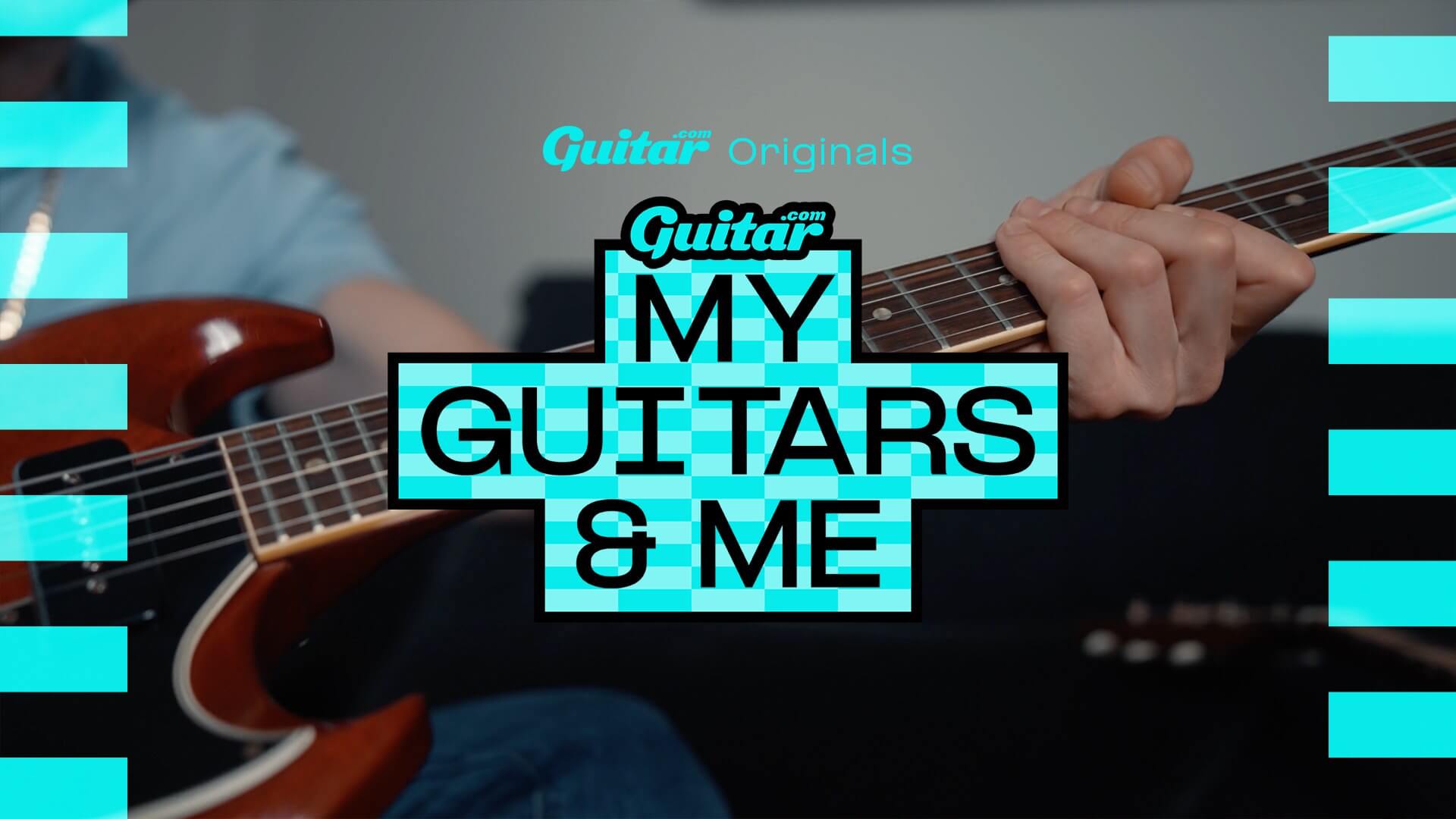The Guitar Gear Used on Slayer’s ‘Reign In Blood’
The thrash metal classic saw the twin-guitar powers of Jeff Hanneman and Kerry King reach their pinnacle, but what gear were they using to make it?

Tom Araya (left) and Jeff Hanneman (right) of Slayer performing in the 1980s. Image: Alison S. Braun/CORBIS via Getty Images
Reign In Blood was Slayer’s third studio album, but it would go on to define the heavier end of the thrash metal spectrum and become an all-time classic, while it was also the first Slayer album to enter the Billboard Top 200 charts (peaking at #94). The album’s crushing riffs, insane solos, disturbing lyrics and famous cover art have made it an album that has become a cornerstone for the heavier end of thrash metal and spawned countless bands and genres seeking in some way to emulate the power and brutality of the original.
Reign In Blood might have been Slayer’s third LP, but it also marked the band’s move from the indie label Metal Blade to Def Jam Records, which had traditionally been a hip hop label, home to the Beastie Boys and LL Cool J – in fact Slayer was the first non-hip-hop band to be signed to the label.
This move proved to be an important one. Slayer brought in a young producer by the name of Rick Rubin, whose presence had a profound effect on the band’s sound on the record. Working together at Hit City West in Los Angeles, Rubin and the band stripped their sound down to a rawer drier signal.
Rubin felt that reverb took away from the band’s aggressive, ‘in your face’ sound. Aside from its use on a couple screams on the album and the intro of Jesus Saves it was conspicuously missing from the album.

As Kerry King explained in Precious Metal: Decibel Presents the Story Behind 25 Extreme Metal Masterpieces,
“It was a different mentality. Right away, the first thing you notice is that there’s no reverb on it. That allows it to be way more threatening – it hits you in the forehead. [Rick] Rubin really cleaned up our sound on that record, which drastically changed what we sounded like and how people perceived us. It was like, ‘Wow – you can hear everything, and those guys aren’t just playing fast; those notes are on time.’ It was what we needed to be. Before that, we were happy to sound like Venom or Mercyful Fate. We played in Reverb Land, for lack of a better term. And the reverb was the first thing Rubin took out. When we heard the mix, we were like, ‘Why didn’t we think of that before?’”
Rubin was recording the Beastie Boys’ License To Ill album at the same time, which is why King was recruited to lay down some guitar tracks for the song No Sleep Till Brooklyn. Rick Rubin’s influence on the album and the career of Slayer cannot be understated. The album also featured a young engineer named Andy Wallace who would go on to work on many iconic albums in the ensuing years. He most recently worked with Avenged Sevenfold and Ghost on their most recent releases.
The band did run into some issues with their new label’s distributor, Columbia Records, as the label’s president took issue with the song Angel Of Death which is about the infamous Nazi, Josef Mengele. But ultimately the song was released with Geffen (although they played it safe and didn’t put their logo on the original pressings) and became a staple of the band’s live set, right up until the very last show the band ever played in 2019. Still, the album did not appear on the label’s release schedule, and received virtually no radio airplay.

The Guitars
When the band went in to record their iconic album, Jeff Hanneman was playing a BC Rich Bich that he got in 1985 from Kerry King, it was modified with a Kahler Pro Bridge and DiMarzio Super Distortions. Kerry used a BC Rich Mockingbird as his main guitar for the record, which also featured DiMarzio Super Distortions. On the previous two albums, Hanneman had used his Gibson Les Paul which had been modded with a Seymour Duncan Distortion pickup in the bridge and a Kahler Tremolo.
Jeff’s Bich had slowly become covered in stickers, a practice that he would continue from then on. He used a couple more BC Rich guitars during the subsequent tours – one was a Bich with a pointed headstock and the other was a Gunslinger. The Gunslinger marked a move to EMG 81 active humbuckers. Shortly after, the BC Rich guitars were replaced by what is perhaps, Jeff’s most famous guitar, his Jackson Soloist, but he wouldn’t get his first Soloist until 1988.

The Amps
Both Hanneman and King relied primarily on Marshall 2203 amplifiers. There is some debate over whether or not they were modded although after speaking with techs for both guitarists; I don’t believe they were. When Kerry King sent in his favorite 2203 amp, the one he dubbed “The Beast”, to Marshall so they could build his signature model, he assumed it had been modded because he said it sounded better than any others that he had used. Much to his surprise, The Beast was just a stock 2203. King’s signature head is basically a stock 2203 with his own 10 band EQ parameters built into one knob and an extra gate built in. It uses KT88 tubes in the power stage and ECC83s in the preamp stage.
As for bassist/vocalist Tom Araya, he also stuck with BC Rich brand, using a B.C. Rich Wave bass fitted with two P-Bass style single coil pickups for the majority of the 1980s before moving over to ESP as many other thrash legends did, including his own bandmates.
The album clocked in at just over 28 minutes, far under the traditional contractual obligation for an album to be 45 minutes, but Rick Rubin was ok with the album as it was – other bands who were presented with similar issues may have been forced to come up with more songs to add as filler. The album was recorded quite quickly so it probably wouldn’t have been an issue but the decision to keep it short bolstered the album’s ‘all killer no filler’ vibe.



